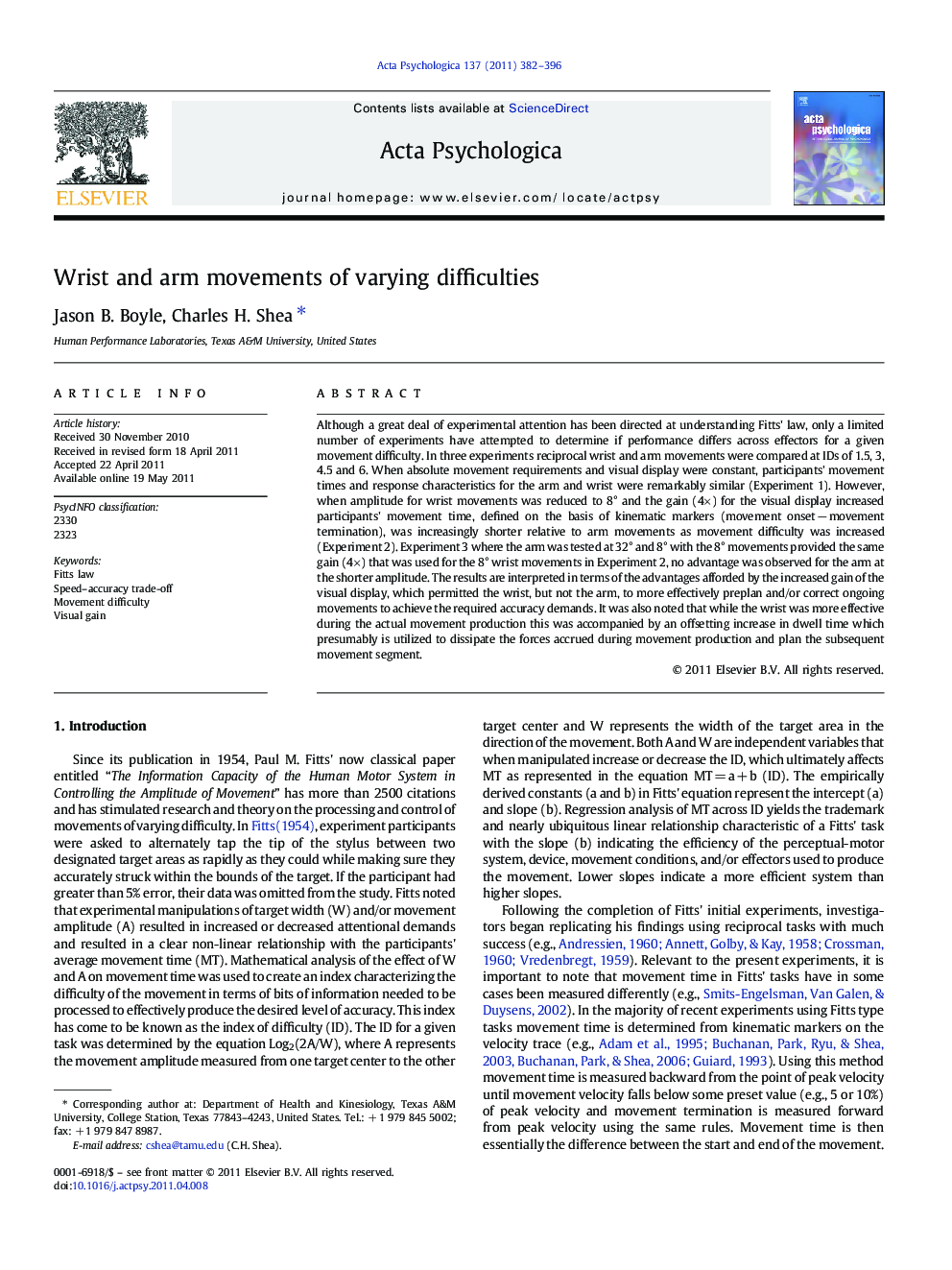| Article ID | Journal | Published Year | Pages | File Type |
|---|---|---|---|---|
| 920039 | Acta Psychologica | 2011 | 15 Pages |
Although a great deal of experimental attention has been directed at understanding Fitts' law, only a limited number of experiments have attempted to determine if performance differs across effectors for a given movement difficulty. In three experiments reciprocal wrist and arm movements were compared at IDs of 1.5, 3, 4.5 and 6. When absolute movement requirements and visual display were constant, participants' movement times and response characteristics for the arm and wrist were remarkably similar (Experiment 1). However, when amplitude for wrist movements was reduced to 8° and the gain (4×) for the visual display increased participants' movement time, defined on the basis of kinematic markers (movement onset − movement termination), was increasingly shorter relative to arm movements as movement difficulty was increased (Experiment 2). Experiment 3 where the arm was tested at 32° and 8° with the 8° movements provided the same gain (4×) that was used for the 8° wrist movements in Experiment 2, no advantage was observed for the arm at the shorter amplitude. The results are interpreted in terms of the advantages afforded by the increased gain of the visual display, which permitted the wrist, but not the arm, to more effectively preplan and/or correct ongoing movements to achieve the required accuracy demands. It was also noted that while the wrist was more effective during the actual movement production this was accompanied by an offsetting increase in dwell time which presumably is utilized to dissipate the forces accrued during movement production and plan the subsequent movement segment.
► Movement time (MT) can be determined in two different ways (with and without dwell time included). ► When visual displays were constant for 16o movements, MTs for the arm and wrist were similar. ► Small (8°)/difficult (ID 6) wrist movements benefit more from a 4x display than small arm movements. ► Difficult wrist movements (ID 6) are characterized by decreased MT but increased dwell time.
